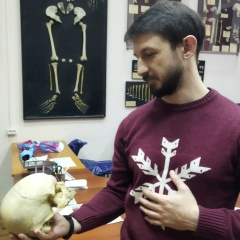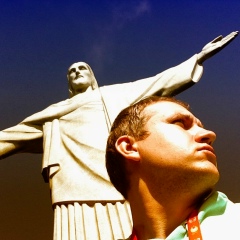Обнаружил на архиве фундаментальный труд А. Шеня "Выборы и статистика: казус "Единой России" (2009–2018)" https://arxiv.org/pdf/1204.0307.pdf
В статье разбираются различные методы статистической оценки масштабов фальсификации на выборах в России.
В связи с этим вспомнил, что в давно хотел оценить масштаб фальсификаций в пользу Полтавченко на выборах губернатора СПб в 2014 году. В преддверие новых выборов довольно актуально - будет с чем сравнивать.
Оценку я хотел сделать самым простым и грубым способом, без всякой статистики, просто сравнить количество проголосовавших на УИК в день голосования на выборах в муниципальных депутатов и на выборах губернатора (выборы проходили в один день, в одних и тех же помещениях, голосующим выдавали два бюллетеня).
Я такую оценку уже делал (https://avsmal.livejournal.com/24683.html), но только по участкам ТИК28, председатель которого предлагал мне закрыть глаза на вброс 1000 бюллетеней за Полтавченко (это при том, что явка на моём УИК была 500 человек, т.е. вбросить предлагалось +200%).
Для сбора данных по всему городу накропал краулер (https://github.com/avsmal/cikrf_crawler), собрал данные в табличку (https://docs.google.com/spreadsheets/d/1Dkhs55Drux2286k5E4KmxpE_YvdLV3XiqQ3ZmGt-RFo/edit?usp=sharing), и получил результат.
Разница количества проголосовавших очно (досрочка и выездные голосования я не учитывал) на одних и на других выборах по всему городу получилась 309 тысяч голосов. Если даже предположить, что 1% голосующих отказывался голосовать на выборах в МО, но голосовал на выборах губернатора, то всё равно осталось 300 тысяч, т.е. к реальной явке набросили 40%.
UPD: это грубая оценка, т.к. она оценивает только один способ фальсификации, а именно приписки голосов за конкретного кандидата. Насколько я понимаю, на примере ТИК28, протоколы переписывались прямо в ТИК-е.
В статье разбираются различные методы статистической оценки масштабов фальсификации на выборах в России.
В связи с этим вспомнил, что в давно хотел оценить масштаб фальсификаций в пользу Полтавченко на выборах губернатора СПб в 2014 году. В преддверие новых выборов довольно актуально - будет с чем сравнивать.
Оценку я хотел сделать самым простым и грубым способом, без всякой статистики, просто сравнить количество проголосовавших на УИК в день голосования на выборах в муниципальных депутатов и на выборах губернатора (выборы проходили в один день, в одних и тех же помещениях, голосующим выдавали два бюллетеня).
Я такую оценку уже делал (https://avsmal.livejournal.com/24683.html), но только по участкам ТИК28, председатель которого предлагал мне закрыть глаза на вброс 1000 бюллетеней за Полтавченко (это при том, что явка на моём УИК была 500 человек, т.е. вбросить предлагалось +200%).
Для сбора данных по всему городу накропал краулер (https://github.com/avsmal/cikrf_crawler), собрал данные в табличку (https://docs.google.com/spreadsheets/d/1Dkhs55Drux2286k5E4KmxpE_YvdLV3XiqQ3ZmGt-RFo/edit?usp=sharing), и получил результат.
Разница количества проголосовавших очно (досрочка и выездные голосования я не учитывал) на одних и на других выборах по всему городу получилась 309 тысяч голосов. Если даже предположить, что 1% голосующих отказывался голосовать на выборах в МО, но голосовал на выборах губернатора, то всё равно осталось 300 тысяч, т.е. к реальной явке набросили 40%.
UPD: это грубая оценка, т.к. она оценивает только один способ фальсификации, а именно приписки голосов за конкретного кандидата. Насколько я понимаю, на примере ТИК28, протоколы переписывались прямо в ТИК-е.
Found on the archive the fundamental work of A. Shen. "Elections and statistics: the case of United Russia" (2009–2018) "https://arxiv.org/pdf/1204.0307.pdf
The article deals with various methods of statistical evaluation of the scale of fraud in elections in Russia.
In this regard, I remembered that I wanted to assess the scale of fraud in favor of Poltavchenko in the elections of the SPb governor in 2014 for a long time. On the eve of the new election is quite relevant - it will be something to compare.
I wanted to make the assessment in the simplest and most rude way, without any statistics, just to compare the number of voters at the PEC on the day of voting in the elections for municipal deputies and for the governor elections (elections were held on the same day, in the same premises, two ballots were issued ).
I have already made such an assessment (https://avsmal.livejournal.com/24683.html), but only in TIK28 sections, the chairman of which suggested that I turn a blind eye to stuffing 1000 ballots for Poltavchenko (this despite the fact that 500 people, that is, it was suggested to throw in + 200%).
To collect data on the entire city, the ny crawler (https://github.com/avsmal/cikrf_crawler) collected the data in a tablet (https://docs.google.com/spreadsheets/d/1Dkhs55Drux2286k5E4KmxpE_YvdLV3Xiq33ZmGtrmtrmtrmtrmtrmtp4gmtg4gkgtgrgtgtgrgtg3gtg3d. ), and got the result.
The difference in the number of those who voted in person (I did not take into account early voting and mobile voting) in some and other elections throughout the city turned out to be 309 thousand votes. Even if we assume that 1% of the voters refused to vote in the elections to the MI, but voted in the elections of the governor, still 300 thousand remained, i.e. to the real turnout, threw 40%.
UPD: This is a rough estimate, because she assesses only one method of falsification, namely the registration of votes for a particular candidate. As far as I understand, on the example of TIK28, the protocols were copied directly to the TIC.
The article deals with various methods of statistical evaluation of the scale of fraud in elections in Russia.
In this regard, I remembered that I wanted to assess the scale of fraud in favor of Poltavchenko in the elections of the SPb governor in 2014 for a long time. On the eve of the new election is quite relevant - it will be something to compare.
I wanted to make the assessment in the simplest and most rude way, without any statistics, just to compare the number of voters at the PEC on the day of voting in the elections for municipal deputies and for the governor elections (elections were held on the same day, in the same premises, two ballots were issued ).
I have already made such an assessment (https://avsmal.livejournal.com/24683.html), but only in TIK28 sections, the chairman of which suggested that I turn a blind eye to stuffing 1000 ballots for Poltavchenko (this despite the fact that 500 people, that is, it was suggested to throw in + 200%).
To collect data on the entire city, the ny crawler (https://github.com/avsmal/cikrf_crawler) collected the data in a tablet (https://docs.google.com/spreadsheets/d/1Dkhs55Drux2286k5E4KmxpE_YvdLV3Xiq33ZmGtrmtrmtrmtrmtrmtp4gmtg4gkgtgrgtgtgrgtg3gtg3d. ), and got the result.
The difference in the number of those who voted in person (I did not take into account early voting and mobile voting) in some and other elections throughout the city turned out to be 309 thousand votes. Even if we assume that 1% of the voters refused to vote in the elections to the MI, but voted in the elections of the governor, still 300 thousand remained, i.e. to the real turnout, threw 40%.
UPD: This is a rough estimate, because she assesses only one method of falsification, namely the registration of votes for a particular candidate. As far as I understand, on the example of TIK28, the protocols were copied directly to the TIC.
У записи 21 лайков,
1 репостов,
995 просмотров.
1 репостов,
995 просмотров.
Эту запись оставил(а) на своей стене Александр Смаль










































